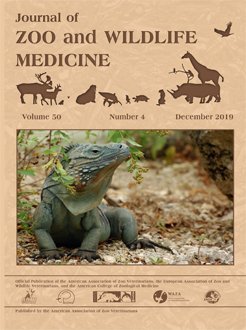Between July 2007 and June 2017 there were 86 deaths in the populations of eight caecilian species at the Zoological Society of London (ZSL) London Zoo. The mortality rate (deaths per animal-year at risk) ranged from 0.03 in the Congo caecilian (Herpele squalostoma) to 0.85 in Kaup's caecilian (Potomotyphlus kaupii). Among the 73 individuals examined post mortem, no cause of death or primary diagnosis could be established in 35 cases, but of the others the most common cause of death was dermatitis (22 cases). When all significant pathological findings were considered, skin lesions of varying types were again the commonest (56 cases), particularly among the aquatic species: Typhlonectes compressicauda (18 out of 21 cases), T. natans (8/10) and P. kaupii (12/14). Other common findings were poor gut-fill (35 cases), kidney and gastrointestinal lesions (10 cases each), generalized congestion (8 cases) and poor body condition (6 cases). This review adds to the growing body of knowledge regarding the presentations and causes of disease in captive caecilians.
How to translate text using browser tools
9 January 2020
POSTMORTEM FINDINGS IN EIGHT SPECIES OF CAPTIVE CAECILIAN (AMPHIBIA: GYMNOPHIONA) OVER A TEN-YEAR PERIOD
Edmund J. Flach,
Yedra Feltrer,
David J. Gower,
Stephanie Jayson,
Christopher J. Michaels,
Ann Pocknell,
Sonja Rivers,
Matthew Perkins,
Matthew E. Rendle,
Mark F. Stidworthy,
Benjamin Tapley,
Mark Wilkinson,
Nic Masters
ACCESS THE FULL ARTICLE
Caecilian
dermatitis
disease
pathology
review





